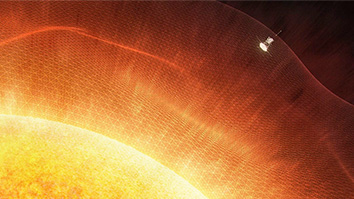Citation
Zhang, L., Singh, S., Tian, C., Shen, Y. R., Wu, Y., Shannon, M. A., & Brinker, C. J. (2009). Nanoporous silica-water interfaces studied by sum-frequency vibrational spectroscopy. The Journal of chemical physics, 130(15), 154702.
Abstract
Using sum-frequency vibrational spectroscopy, we found that waterstructure at nanoporous silica/water interfaces depended on the nanoporous film structure. For a periodic, self-assembled nanoporous film with monosized 2 nm pores occupying 20% of the top surface area, the surface vibrational spectrum was dominated by water in contact with silica, bare or covered by silane, at the top surface. It resembled the spectral characteristic of the hydrophilic water/silica or the hydrophobic water/silane interface. For a fractal nanoporous film with pores ranging from 5 to 50 nm in size occupying 90% of the top surface, the spectrum for a trimethyl silane-coated superhydrophobic porous film resembled largely that of a water/air interface. Only when the silane was completely removed would the spectrum revert to that characteristic of a hydrophilic water/ silica interface. The surface charging behaviors of the bare nanoporous films in water with different 𝑝HpH were monitored by spectroscopic measurements and atomic force microscopy force measurements. The point of zero charge for the periodic porous film is around 𝑝HpH 2, similar to that of the flat silica surface. The point of zero charge could only be determined to be 𝑝H<6pH<6 for the fractal porous film because the thin fractal solid network limited the amount of surface charge and therefore, the accuracy of the measurements.


